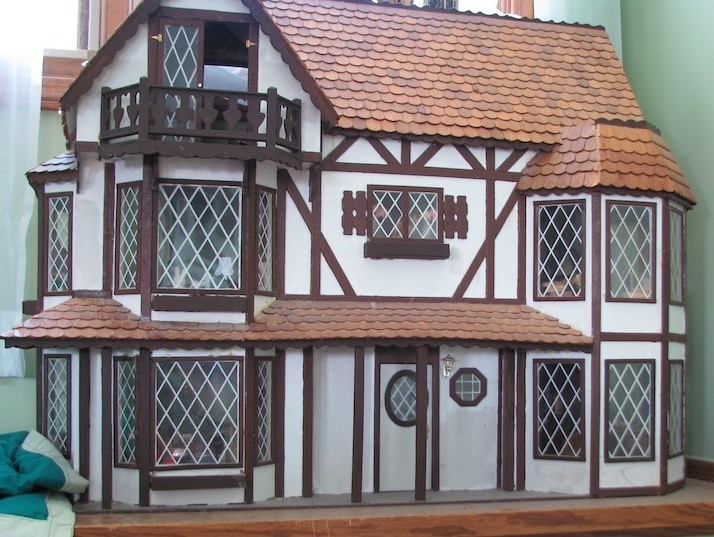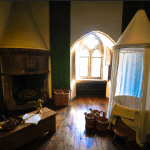History
When asked to describe Tudor architecture, most of us will respond with “timbers painted black with white plaster filling the spaces in between.” Good. Technically it’s called “half-timber, wattle and daub.” Half the width of the timber being exposed is obvious; waddle and daub, not so much. Waddle was a lattice work of thin branches, replaced in modern times by cedar or metal lath. The big change is in the “daub.” Formerly a mixture of clay, straw and manure, it has been replaced by a cement based plaster.
Window Frames
Next question: What do Tudor windows look like? Easy. Little pieces of clear glass about the size a large hand, held together by strips of lead, and set in a wooden frame. Right again. The glass pieces were usually diamond or rectangular in shape. If the wooden frame (or case) was attached to the wall by hinges, it was a casement window that could swing out for ventilation. Larger window frames and window walls were stationary because there was a structural limit with leaden glass on how large a single frame could be. Some Tudor manor houses (Little Morton Hall) did challenge those limits.
Tudor Glass
Making glass was difficult and expensive. A blob of glass was blown into a cylinder-shaped bubble, sometimes as long a six feet. When it cooled, the hardened bubble was cut in half, producing a slab of glass that was then cut into various shapes to fit a criss-cross or ‘lattice’ pattern. These pieces of glass were joined by a strip of hot lead, then placed in the frame.
No Stained Glass
Tudor glass was always clear because of Henry VIII’s “dissolution” of the Holy Roman church. No colorful stained glass windows for the Anglicans. However, those clever Tudor nobles got around this stricture by inserting stained glass coats of arms, family portraits or scenes depicting the manor house in which the windows were placed.
Plate Glass
Large panes of glass were not mass produced until after 1848, when Sir Henry Bessemer got the first patent to make “plate” glass. Yes, the very same Bessemer that got patents on making tempered steel. Glass and steel. Where would modern architecture be without Sir Henry?
Dollhouse Tudor Windows
Of course you don’t want to get into glass blowing and molten lead to make dollhouse miniature windows. That’s taking authenticity a bit far. Here are three tutorials to guide you.
The first is a step-by-step text document with photos from the Glorious Twelfth blog, specifically for miniaturists.
I like video tutorials. This one is from the “Jen Spends Less” website. It’s a real room project, but you can easily scale it down. You’ll find a link to the third tutorial In the caption to Jen’s video.
A word about authenticity. I love the picture of Danielle Le Brun’s “My Second Dollhouse” from her Miniature Memories blog. It is unlikely you will find a real middle-class merchant’s home with that much glass. But who cares! We have already suspend disbelief when we build a home for a 1:12 scale human beings.
Susan Downing, with Patrick Owens







